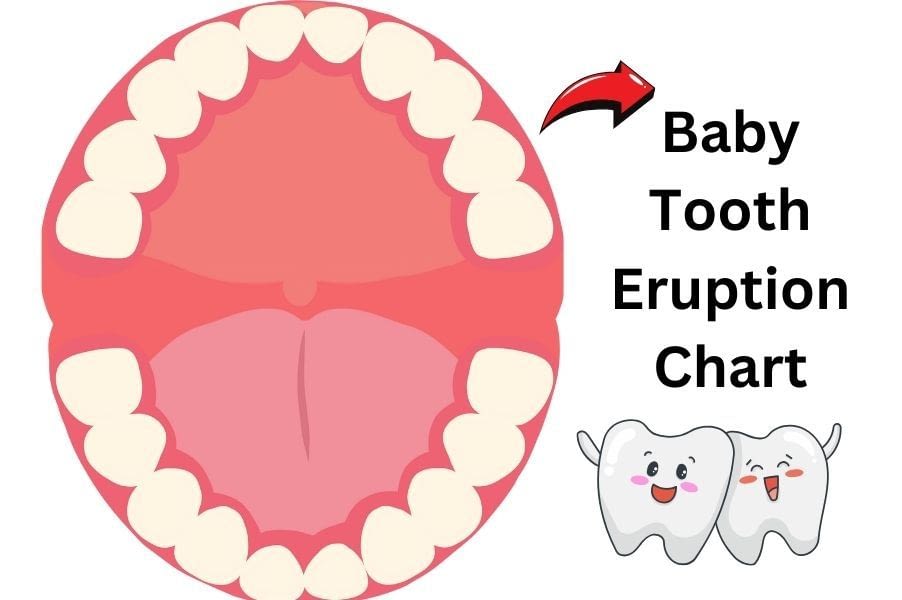Putting a hyper baby to sleep can be challenging for parents, especially when sleep deprivation affects both the child and the caregivers. However, with effective tricks, you can help your baby fall asleep quickly and enjoy a restful night. This article will explore proven methods for parents to learn how to put a baby to sleep in 40 seconds, allowing you to reclaim those precious moments of tranquility.
18 Tips: How to put a baby to sleep in 40 seconds?
One of the most significant challenges of being a parent is getting your baby to sleep. But if you know the proper techniques, you can settle your baby in 40 seconds! Here are some tips to help you put learn how to put a toddler to sleep in 40 seconds quickly and easily:
Establish a bedtime routine.
A routine helps your child recognize when it’s time to go to sleep and become comfortable with sleeping.
Set a consistent schedule for your baby’s bedtimes, naps, and other activities. This will create an atmosphere that encourages your child to sleep quickly and for the entire night.
Babies thrive on structure, so create a regular sleep routine for your baby’s bedtime that includes calming activities like reading stories, singing lullabies, and giving your newborn a gentle massage.
Set up a comfortable environment.
Make sure the room is dark, quiet, and cool. If your baby is old enough, use blackout curtains and remove any distractions, such as toys or stuffed animals, in the room. It will help you with how to put a hyper baby to sleep.
- Light: Create a soothing, dark environment by dimming or turning off all the lights in the baby’s room about an hour before bedtime. It will cue your little one that it’s time for sleep.
- Temperature: Aim to keep the temperature in the bedroom at around 65°F (18°C).
- Voice: Keep your voice low and soothing when you’re with your baby.
Offer a bath.
A warm bath before bedtime can help you get a hyper baby to sleep and relax. Ensure it is not too hot, and keep the time of the bath short (5-10 minutes).
During bath time, talk softly with your child and maintain eye contact, creating a soothing atmosphere for sleep. After the bath, gently pat them down with a dry towel before bringing them to their crib or bassinet.
Related: How to Wash Baby Hair without Getting Water in Eyes?
Swaddle your newborn
Swaddling helps to recreate the comforting feeling of being in the womb, which can help your baby quickly drift off to sleep. Ensure you use a lightweight, breathable fabric that won’t get too hot, the baby remains safely covered, and follow all safety guidelines when swaddling your baby.
Once your baby is securely swaddled, you can lay them down in their crib or bassinet and kiss them goodnight.
Feed them.
If your baby is hungry, it can be hard for them to fall asleep. Offer a small snack or bottle before bedtime, and then put your baby into their crib while they are still drowsy but awake. This will help them associate going to sleep with being in their bed.
Related: Is It OK to Put Baby to Sleep Without Burping?
Make sure your baby is warm and comfortable.
Ensure your infant isn’t too hot or cold, and adjust the clothing and bedding accordingly. Moreover, before you lay your baby down, ensure they are dressed in the appropriate sleepwear and have a clean diaper.
Give the baby enough sense of security.
Babies need to feel secure and loved to fall asleep. Make sure your baby knows you’re there for them by talking softly, offering gentle touches, and providing a reassuring presence during bedtime. Doing this will give them the confidence they need to relax and sleep.
Stroke their forehead.
Gently stroking a baby’s forehead can be a soothing gesture that helps them relax and potentially aids their ability to fall asleep. Many babies find gentle touch comforting, and it can create a sense of security and calmness.
Play white noise
White noise can help to mask sounds that might otherwise be distracting or disruptive, like loud noises from outside your home. Many parents find white noise helpful when learning how to put a baby to sleep at night by creating a calming atmosphere and settling their baby for sleep.
Various white noise machines are available on the market, but you could also use natural white noise, such as fans or even an app on your phone, to provide soothing soundscapes during bedtime.
Lay your baby on the bed, drowsy but awake.
Your baby should still be awake but drowsy when placed in its crib. It helps the baby transition from alertness and responsiveness to sleeping independently.
Turn to music.
Playing calming instrumental music can help your baby relax and drift into dreamland. Choose a soothing song or playlist that will help create an atmosphere of relaxation in the room.
Use oils to relax them.
Aromatherapy oils can help create a calming and relaxing atmosphere in your baby’s bedroom. Lavender is especially effective for babies, as it has natural soothing properties that can help them to fall asleep.
Put a few drops of lavender oil on their pillow or bedsheet, or use it in an aromatherapy diffuser. Just keep the diffuser away from their crib and out of reach so they don’t accidentally come into contact with it.

Offer Comfort Objects
Providing comfort objects such as pacifiers, stuffed animals, or blankets can reassure babies when going to sleep. These items may become security sources if properly introduced during bedtime routines and carefully monitored throughout the night. When used mindfully, comfort objects can be practical tools for helping babies get to sleep and stay asleep longer.
Gently rock your baby.
How to put a crying baby to sleep? Gently rocking your infant in their crib or bassinet and even just rubbing their back can help to lull them into a peaceful sleep.
Encourage self-soothing skills.
How to make a baby fall asleep on their own? Allow your baby to practice falling asleep on their own. If you have to intervene too often, start slowly by giving your baby a chance to learn how to soothe themselves for a few minutes before rushing in with assistance. With consistency, this will help your little one become more independent with sleep and put them down faster than ever!
Leave the room
Once you have finished your bedtime rituals, if your baby is still awake, it’s time to leave the room. This will teach them that you trust them to fall asleep independently and help build independence and confidence in your baby.
Monitor Your Baby’s Sleep Habits
Finally, note how long it takes your baby to fall asleep and be alert for any changes in behavior or sleeping patterns. If you notice a sudden change, talk to your pediatrician about it and devise a plan for helping your baby return to healthy sleep habits. You can get your baby to sleep in less than a minute with patience and dedication!
Use positive reinforcement.
When your child has learned to put themselves to bed in under a minute, you can reward him with positive reinforcement, such as verbal praise and a treat. It will reinforce their behavior, making it easier to do it again.
By following these sleep tricks for 1 year old, you can quickly put your baby to sleep in less than a minute and create healthy sleep habits for your little one.
Things to avoid: How to put your baby to sleep in under a minute?
Parenthood brings immense joy and fulfillment but comes with its fair share of challenges. One of the most common hurdles parents face is getting their baby to fall asleep and stay asleep.
Many exhausted parents wonder if there is a magical formula to make their little ones drift off into dreamland within seconds. While achieving instant sleep may not be feasible, there are several things that you can avoid that can help facilitate a peaceful slumber for your baby.
Avoid overstimulating activities
Avoid playing with your baby or engaging in any activities that may be overstimulating before bedtime. This includes things like bouncing or playing with toys.
Late-night Screen Time and Electronic Devices
In today’s digital age, limiting your child’s exposure to electronic devices before bedtime is essential. Blue light from screens suppresses melatonin, a hormone regulating sleep and wake cycles.
Avoid allowing your child to use smartphones, tablets, computers or watch TV at least one hour before bedtime. Instead, encourage reading, storytelling, or quiet play to help them unwind.
Uncomfortable Sleep Environment
It is essential to provide your child with an environment that allows them to sleep comfortably. Avoid having excessive noise, bright lights, or extreme temperatures in their bedroom. Use blackout curtains to create a dark and quiet atmosphere. Ensure their mattress and pillow suit their age and preferences, promoting proper spinal alignment and support.
Inconsistent Napping Schedule
A consistent daytime nap routine can significantly impact your child’s sleep at night. Avoid erratic or overly long naps close to bedtime, as they can interfere with their sleep drive. Plan regular and age-appropriate naps throughout the day, ensuring they are not too close to bedtime.
Ignoring Sleep Indicators
Children often exhibit clear signs when they are tired and ready for sleep. Ignoring these indicators can make it difficult for them to settle down when overtired. Look for signs such as yawning, rubbing eyes, or becoming cranky. Respond promptly by initiating their bedtime routine, ensuring they go to bed appropriately. Hence, it is best to deal with how to put a crying baby to sleep.
Anxiety and Emotional Upsets
Children may experience anxiety or emotional upsets that can affect their sleep. Avoid discussing or engaging in intense or stressful topics close to bedtime. Instead, create a calm and supportive environment where your child feels safe and secure.
Bedtime can be an opportunity to engage in reassuring conversations or relaxation techniques that can help ease their anxieties.
Avoid picking up your baby before they are done sleeping.
As it will only encourage them to stay awake and resist sleep. If you must pick them up for safety reasons, try rocking or cuddling them until they fall asleep.
Don’t rush.
Step back and let your child calm down before getting them back to bed. It gives them time to calm down independently and learn to soothe themselves.
Remember, every baby is different and may respond better or worse to specific methods. Explore various techniques to see what works best for your newborn. With the right approach, you’ll be able to help your baby sleep peacefully in no time!
How to trick a baby into thinking you’re holding them?
Using a transportable baby seat is one way to trick a baby into thinking you’re holding them. You can prop the seat against your body and have the baby facing outward as if snuggled in your arms.
As long as the seat provides enough support, this should convince the baby that they are in a safe and comfortable place. Another solution is to use a baby wrap or sling.
These hold the baby close to your body as if they were being held in your arms. This can create a feeling of security and comfort for the baby, often leading them to believe they are being held by someone special. Therefore, you can learn how to make a baby fall asleep fast.
Finally, you can try playing games with the baby. One example would be gently pretending to “tickle” or “nuzzle” them while in their seat or wrap. This can create a feeling of safety and provide the baby with an interactive, comforting experience. These methods should help trick a baby into thinking you’re holding them.
Conclusion: How to put your baby to sleep in under a minute?
Implementing the aforementioned sleep tricks can significantly assist in promptly soothing your baby to sleep. Establishing a consistent and healthy sleep routine is crucial, which will contribute to their overall well-being and ensure they wake up at an appropriate time.
A structured sleeping routine is important for your child’s physical and mental health. By following a regular pattern, you can improve their well-being and happiness.
Remember that each baby follows a unique sleeping cycle, eating, and elimination. However, if your baby consistently appears fatigued, exhibits poor appetite, or struggles to maintain sufficient sleep, seeking guidance from a healthcare professional may be beneficial. Their expertise can provide invaluable support and assistance.
Parents Also Ask
What is the 3 minute rule baby sleep?
The 3-minute rule in baby sleep refers to a technique where parents wait 3 minutes before responding to their baby’s cries during sleep training. It involves gradually increasing the time between parental interventions to encourage self-soothing and independent sleep.
Why is my baby not sleeping deeply?
Babies may not sleep deeply due to various reasons such as hunger, discomfort, developmental milestones, teething, illness, or overtiredness. It is usual for babies to have lighter and more fragmented sleep patterns compared to adults.
How can I relieve my baby’s gas?
To relieve your baby’s gas, you can try gentle tummy massages, bicycle leg movements, holding them upright during and after feeds, burping them frequently, using over-the-counter gas relief drops specifically designed for infants (under the guidance of a healthcare professional), or adjusting their feeding position to reduce air swallowing.
1 Visit today





